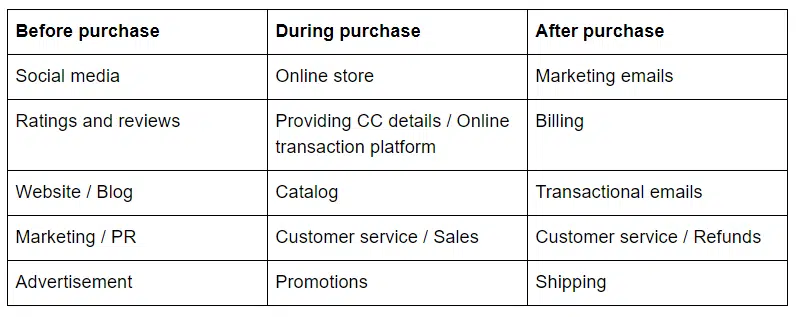


As consumers are increasingly protective over their security and privacy, gaining their ‘cyber trust’ is becoming critical to the customer experience. Online transactions often require consumers to share personal information and payment data, and there is a clear correlation between trust, customer satisfaction, and business success.
Businesses can enhance their customer experience and differentiate themselves from their competitors by incorporating ‘cyber trust’ into their customer experience model. It’s no secret that acquiring new customers is more expensive than to retain existing customers. Research indicates that it can cost five times more to gain a new customer than to retain one.
A poor customer experience caused by a cybersecurity incident will directly affect your bottom line. Deloitte has reported that 64% of consumers would switch to another brand if they found out their personal data had been sold and if a data leak occurred. In addition, 73% of consumers would consider changing to another brand, and even before choosing to make a purchase, 82% of consumers will leave a site if they perceive it to be not secure.
So rather than purely focusing on your consumer’s ‘omnichannel’ experience, incorporating security can transform it into an ‘omnitrusting journey’. Gaining the trust of customers can make a significant impact on your bottom line.
The following three steps illustrate how to create a secure customer experience that will not only do what it says on the box (i.e. keep them secure), but also assure customers that your business has their interests as a top priority.
Your employees are the ambassadors of your products and brand reputation. They play an important role in developing trust with your customers. Training and supporting employees in proper security protocols is a key element in this first step of the customer experience model.
It is also important for your products and services to be developed with security in mind, rather than as an afterthought. If customers can develop confidence that your product or service is secure, they are more likely to be retained as a returning customer.
A customer will have many different touch points (see chart below) with a company prior to, during, and post-purchase. Consumers on average use almost six touch points, with almost 50% regularly using more than four touchpoints with every purchase. This presents several opportunities where their trust can be breached, impacting customer experience. Reviewing each of these touch points for security gaps should be a recurring process.
There are many examples of how trust can be compromised through multiple touch points. The most obvious include company websites and online stores, where the site has been infected with viruses and malware, or a hacker changing a link on the site to redirect to a fraudulent one.
A common hacking target is the online transaction touch point, where a hacker can embed a card skimming attack. In 2018, Newegg.com’s website was hacked with a card skimming attack called Magecart, with the purpose of stealing customer credit card information. Equifax was also criticized for its handling of the aftermath of a breach in 2017. They waited six weeks to alert the public. Many affected customers were never contacted by Equifax following the attack. To this day, when many people hear the word ‘Equifax’, the first thing that springs to mind is the security breach and how poorly it was handled.
Online customer journey touchpoints:


Even organizations with a strong cybersecurity posture can be breached. So it’s important to have a clear communication and action plan already in place if a breach should occur.
The Newegg.com hack provides a good example of timely and informative communication. The attack occurred between August 14 and September 18 of 2017. Newegg informed the public on the 19th, the very next day, via Twitter and also sent emails to their impacted customers. The retailer also quickly published a FAQ about the incident.
Providing customers with genuine ‘cyber trust’ is an essential part of the customer experience today and will play a critical role in the long term success of a business. Customers are increasingly hesitant of passing on their personal information and of clicking the agreement to online terms of privacy. Whether they read the terms or not is not the issue, as the growing consensus is that the businesses themselves are limited in their ability to really protect themselves and their customers from data loss.
Companies that are able to demonstrate that they are taking their customer data protection seriously will gain their customers’ trust and this will lead to greater customer lifetime value. This can (and should start) by examining the various touch points of the customer experience from a security perspective, and look for gaps. A cybersecurity provider like Cyberint can help with that process.
©1994–2025 Check Point Software Technologies Ltd. All rights reserved.
Copyright | Privacy Policy | Cookie Settings | Get the Latest News
Fill in your business email to start


